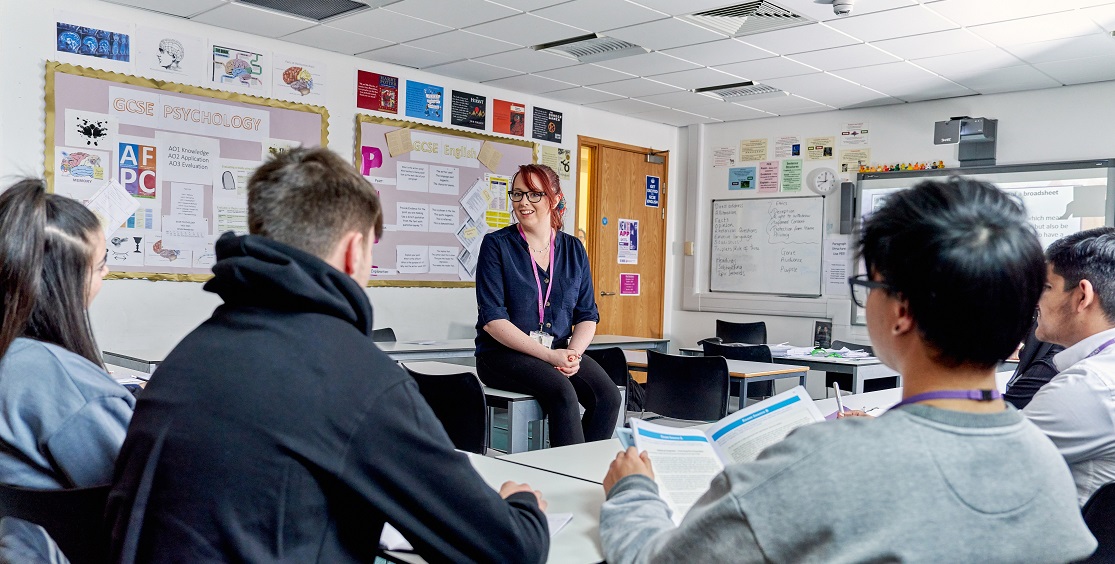Avoiding the MisMATch: How Edtech can Help Academisation

The government’s desire for all schools to be in a multi academy trust, or working towards joining one, by 2030 remains an ambitious target. By January 2022, just over a third of primary schools and 80% of secondary schools were academies (45.5% of all schools), many of whom were not in a MAT. Back in 2016 the government’s bid to force all schools to become academies and/or to join MATs was unsuccessful. Nevertheless, the number of schools joining MATs has continued to rise, albeit slowly.
A wealth of research already exists on the reasons why schools join, or don’t join MATS. My aim is not to add to this but instead, review the key issues facing schools who have not academised, or who have yet to join a MAT. However, with over 50% of all schools still not part of the academy programme (developed for over 20 years now), why are a significant number still not convinced of its benefits? EdTech might be the solution and so I will also consider how this might aid the growth of a fully trust-led system.
Why do schools still need convincing of MAT benefits?
Undoubtedly, politics is still an important factor to consider, with Labour controlling 15 of the 20 least academised areas of the country and the Conservatives in power in 11 of the 20 most academised areas. However, effective school improvement support from local authorities cuts across the political divide, with schools in areas such as Hampshire (Con) and West Berkshire (Con) maintaining their autonomy and possibly seeing no advantage in academisation.
Indeed, autonomy is the word that features in most discussions I have with schools when they share their views with me on joining a MAT. Many schools still feel that the strengths they have – their culture or the different and special ways they operate – would be lost if they were subsumed within a larger body of schools and had to conform to the MAT model. A DfE survey in late 2021 supported these views, despite further survey results showing that 82 per cent of primary schools and 74 per cent of secondary schools believed joining a MAT had been a positive experience.
Shortage of strong trusts in less academised areas
Moreover, a shortage of strong trusts in less academised areas of the country has meant schools have had to consider joining one of the larger MATs and this is not what they want. As there is no local trust whose vision and values aligns with theirs, they remain keen to convert, but will chose to wait until a good match is identified.
Yet, the Government’s Schools White Paper and “Case for a fully trust-led system” document suggest that significant thought has been given on how to overcome the obstacles identified and make sure the process runs smoothly. The framework and guidance published in May – “Implementing school system reform in 2022 to 2023 – Next steps in following the Schools White Paper” – will support schools to move forward in forming or joining a MAT. Additionally, many local authorities, as well as the Local Government Association, have commented positively on the government’s removal of the objection to local authorities setting up their own MATs.
Streamlining school governance
I believe streamlining the system of school governance in this way may overcome the concerns of many maintained and voluntary aided schools to becoming academies. In fact, further streamlining by encouraging Single Academy Trusts (SATs) to join MATs, whilst not allowing the creation of additional SATs, again brings a fully trust-led system closer. It is also highly likely following consultation, schools that have received two consecutive ‘Good’ judgements from Ofsted in 55 newly-created Education Investment Areas will begin to join stronger trusts from September 2022.
Overall, increasing regulation for MATs has received a positive response and I believe that this not only inspires more confidence in the system (where some have likened its development to the lawlessness and entrepreneurial spirit of the ‘Wild West’), but also with rules that promote growth. Indeed, the new Regions Group will play an important part in driving improvement and fostering effective collaborations with local partners, but will also align their work with all other government work within the nine regions. Ultimately, the creation of statutory academy standards and the ability to limit the proportion of schools that a single trust may have in a certain area suggests stronger regulation for a fully trust-led system.
The role of EdTech
Additional concerns about joining a MAT may arise because of the differences in systems used by the MAT and by the joining school. From the MAT’s perspective there may be non-negotiables around how attendance, conduct and academic performance are recorded and reported upon by all schools. Therefore, it is important for a discussion to be had regarding expectations. Schools may be in agreement about what they are recording and why, but data wise, if different systems are being used, or if the same system is being used but differently, there is a real need for clarity and possibly training to ensure that the transition to becoming a member of the MAT goes smoothly.
From my experience over the last nine years, conversations I have had with maintained schools; academies wanting to join MATs; and MATs themselves have mostly been around EdTech and how systems can be combined and enhanced across a group of schools. The Schools White Paper suggests that trusts develop central capacity when they have more than 10 schools, as this size creates economies of scale, promotes collaboration, enables good practice to be shared, stimulates school improvement, and provides more opportunities to staff. I would argue that a purposeful and strategic EdTech/ICT plan provides huge benefits to any MAT, regardless of size, not only in terms of financial savings, but because it also provides consistency across multiple schools. This enables each academy to adhere to the same technical standards, as well as the standards associated with staff and pupil conduct, and most importantly standards associated to the delivery and assessment of the curriculum. The importance of something as basic as having the Trust’s vision, values and ethos clearly explained and accessible to all on its website cannot be underestimated. Not only will this help to embed a Trust’s values into a single organisation mindset, but it will also communicate its vision effectively to schools wishing to join and allay any concerns about what joining may mean for them.
In terms of using EdTech for school improvement a Management Information System used to its full potential is invaluable. Effective communication between the layers of governance and management within a MAT is challenging, yet vital. It is essential to provide performance data to both groups to inform discussions about performance and school improvement priorities. This is particularly valuable in terms of time as many involved in the governance of MATs have commented on the significant time commitment., For this reason, the data they use needs to be at their fingertips at a moment’s notice. If a MAT has invested time in creating consolidated reporting using Power BI or an alternative interactive visualisation software it can easily import data from all of its schools to carry out bespoke data reporting and analysis centrally. Having access to insightful data from across its schools in the form of dashboards, as well as the ability to drill down into the details, means that leaders and Trustees can evaluate performance and intervene when things go wrong, directing their finite resources to where they are most needed. This also enables effective delegation to local governing bodies who can support and monitor within individual schools.
Additionally, these dashboards can be configured to support Integrated Curriculum Financial Planning by combining data from a MAT’s MIS with its financial package. Finances are often a point of contention and this tool provides a way to compare costs between schools at pupil, teacher and department level to inform the fair distribution of resources.
Software
Software can also enable the streamlining of curriculum planning activities and synthesise plans captured in documentation and spreadsheets across a school or schools. All schools need to develop curriculum plans that set out their curriculum intent, implementation, impact, sequencing and mapping. Using curriculum planning software allows MATs to use the expertise across its schools effectively and collaboratively. It enables any teacher to access planning that states clearly how the curriculum for any subject is sequenced, the activities that pupils will complete; and how these are aligned with course outcomes. Assessment planning within the curriculum planning should identify how teachers will judge what pupils know and remember. Good software should allow leaders to identify gaps in what pupils know so that interventions can be planned to address these. For a school thinking of joining a MAT, particularly a small primary school, the advantages are considerable, with teachers able to benefit from subject specialists and wider curriculum leadership. Where assessment outcomes suggest weaknesses in teaching of the curriculum bespoke CPD, as opposed to ‘one size fits all’, can be targeted at those teachers identified and delivered remotely, if appropriate, across MAT schools.
For those MATs with schools that have post-16 provision, or MATs that include Sixth Form colleges, Ed Tech in the form of timetabling software enables the MAT to manage its teachers, resources and accommodation so that academic, technical and vocational courses can be delivered across the MAT. A secondary school with limited capacity to run a broad range of post-16 courses may consider joining a MAT as it arguably provides the best opportunity for its students.
Investment by itself, in EdTech by Trusts or by individual schools is not enough to cause a growth in MATs to meet the government’s desire for a fully trust-led system by 2030. However, once a decision has been made by a school to join a Trust, the Trust’s MIS, its curriculum and financial software, when used effectively, can make a big difference in bringing the new member school onboard. EdTech will help to drive efficiencies and improvement across the Trust by aligning processes and financial management across its schools. The sharp focus provided by analytical tools through EdTech enables leaders to manage the Trust’s resources successfully across its schools, ensuring every student has the best opportunity to succeed.
By Stephen Long, Customer Success Advisor and Customer Success Manager, Education Software Solutions











Responses